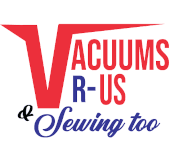Why Are Premium Vacuums So Expensive?
Today, we’re diving into why premium vacuums come with a higher price tag. The reasons extend beyond just performance and delve into business models and infrastructure.
Performance vs. Business Model
Premium vacuums typically offer superior performance, including deeper cleaning and better air filtration. However, the cost isn’t solely due to these performance differences. The business model of companies producing premium vacuums plays a significant role in their pricing.
Disposable vs. Durable: Many vacuums available at department stores are designed to be disposable. These models often lack a maintenance or repair structure, leading to their short lifespan. In contrast, premium vacuums are built to last longer and include comprehensive repair and maintenance systems. This added infrastructure incurs costs, which contribute to the higher upfront price.
The Cost of Infrastructure
Companies that manufacture premium vacuums invest heavily in maintaining a network of repair parts and technical support. For instance, I’ve toured Riccar’s facilities in Missouri, where they store vast quantities of repair components and offer extensive technical support to dealers. This level of service and support is expensive but essential for the longevity of their products.
Consumer Benefits: While the initial cost of premium vacuums is higher, the long-term savings are significant. These vacuums are designed to be maintained and repaired, which can extend their lifespan for years, even decades.
Product Development and Longevity
Premium vacuum manufacturers often have a longer product development cycle. They release a product and keep it on the market for several years, making improvements based on consumer and dealer feedback. For example, Riccar has continuously upgraded its flagship R40 vacuum over the past 20 years to enhance performance and durability.
In contrast, other brands may frequently release new models with little regard for the support or improvement of older models. This approach, while allowing for rapid product turnover, does not prioritize long-term quality or customer support.
Different Business Models
Affordable vs. Premium: Affordable vacuum brands often operate on a model where they make a modest profit per unit, knowing that they will sell new models regularly. These companies can afford to price their vacuums lower because they don’t need to invest in long-term support or product improvement.
Premium vacuum brands, on the other hand, must charge more to cover the costs of maintaining their products over many years. This includes providing repair parts, customer service, and ongoing product improvements.
Making the Right Choice for You
As a consumer, you need to decide which business model suits you best. If you prefer to replace your vacuum frequently, an affordable, disposable model might work for you. However, if you’re looking for a product that offers durability, long-term savings, and superior performance, investing in a premium vacuum might be the better choice.
Conclusion
Premium vacuums are expensive due to the costs associated with their durability, repairability, and the comprehensive support infrastructure behind them. While they require a higher initial investment, they can save money and provide better performance over the long term. The choice ultimately depends on your personal preferences and needs.

